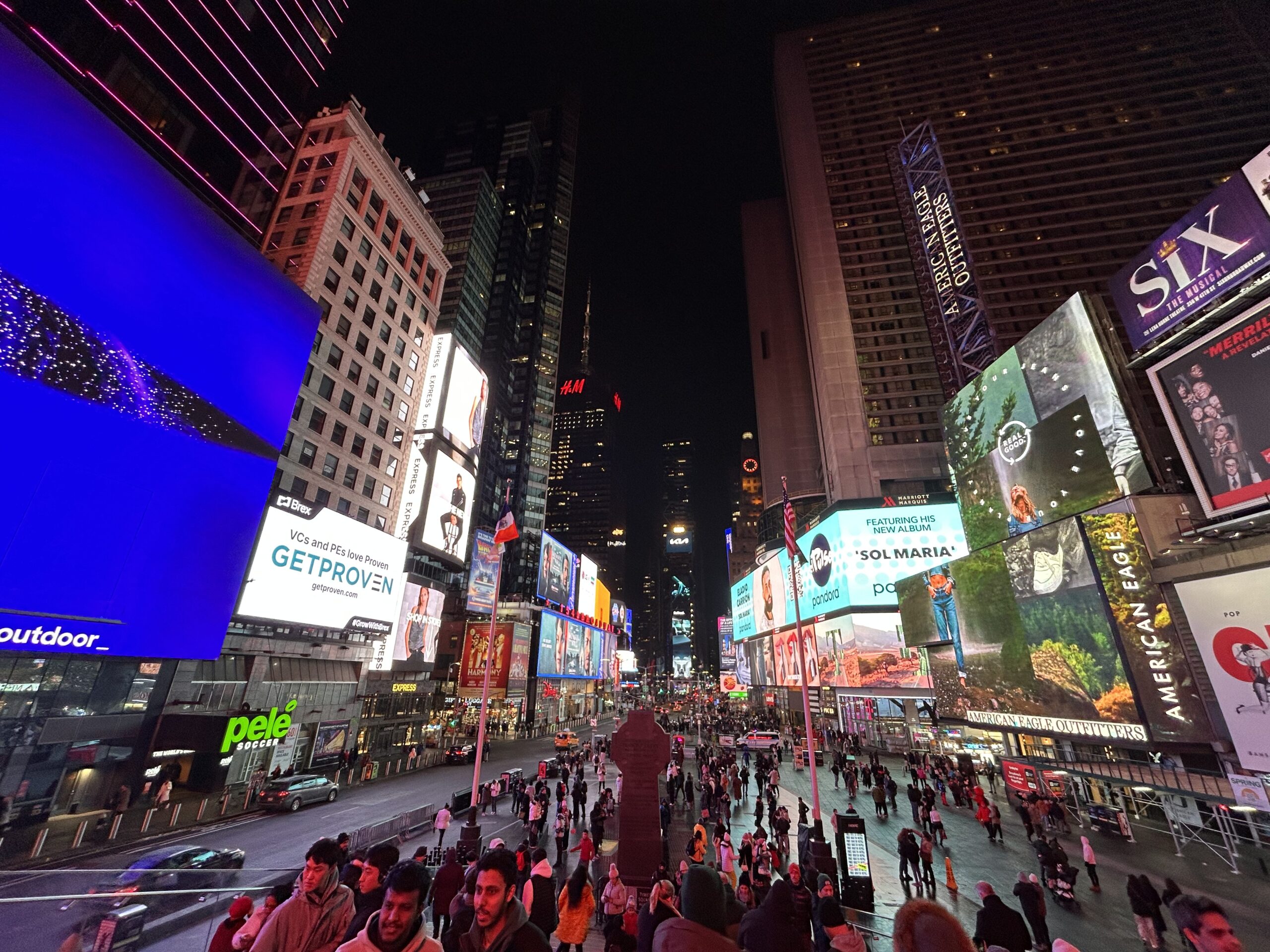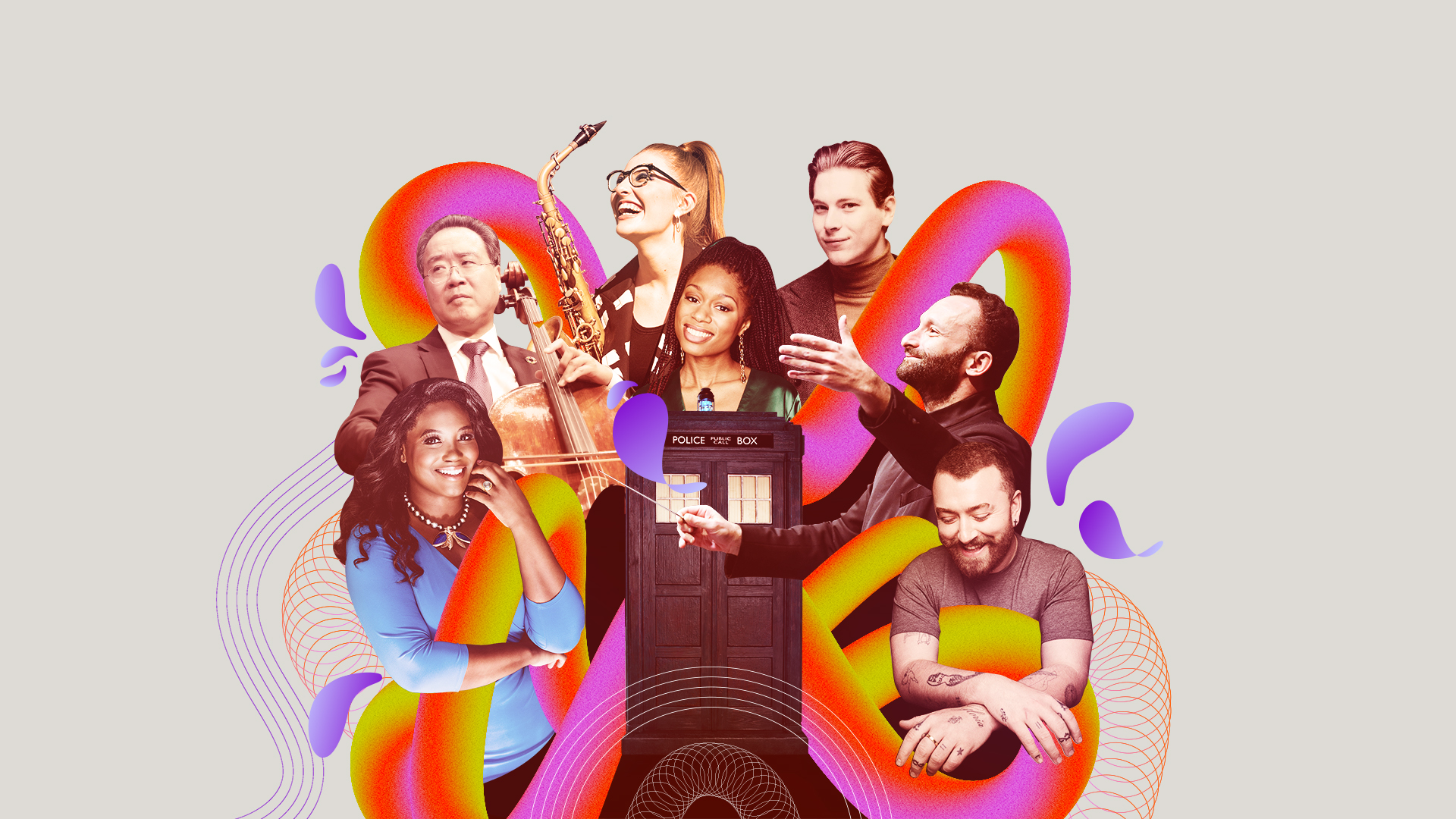5 concerts, 1 opera, lots of walking, and a little bit of sightseeing
I’m in New York this week. First time ever. I feel like a cub scout on an expedition.
Everything is big. The buildings, the portions, and the number of outlets selling weed. London feels like a market town in comparison. Embarrassingly parochial, awkward, and shabby here and there.
New York’s scale demands you don your trainers and get walking. I wasn’t really prepared for that. I’ve walked from the centre of Manhattan, down to Greenwich village, ‘stumbled’ on and walked across the Brooklyn Bridge, and round Central Park twice. Walking is addictive. Meetings, engagements, or activities provide the purpose, but there is the bonus of having to walk in between them. The distances are great. The vanishing points marked out by a line of epic buildings are a constant reminder to push on forward. Central Park demands determination, promises salvation, and rewards with endorphins, birdsong, and eery misty scenes.

I’m here to experience classical music in the US. Or at least classical music in two US cities – New York and Los Angeles. I wanted to hear as many different orchestras as I could in ten days. I wanted to get a sense of what was different, in terms of playing, programmes, audience, and concert experience. So far I’ve heard the Cleveland Orchestra, the Philadelphia Orchestra, attended a masterclass given by Shai Wosny at the Juillard School, and seen the finals of a Juillard Concerto Competition. It turns out it is possible to hear the Elgar Cello Concerto four times in a row and not be a jibbering wreck pining for home.
Today (Friday) I’m heading to the Met to see Nabucco. Saturday, I’ll be on the West Coast to see Dudamel conduct the LA Philharmonic, before returning to New York (jetlagged) to see the Boston Symphony and then, heading home on the red eye.

So far, it’s the standard of playing that I’m noticing most. Sure, its only been two orchestras I’ve heard, but I can honestly say I’m not sure I’ve heard sounds quite as good as the two I’ve heard so far. The Philadelphia was mind-blowing. Carnegie Hall’s acoustic – generous, warm, and resonant – no doubt helps, yet it would surely show up the faults if they were there. I just don’t hear them. It’s like riding in a BMW. I’ve only ridden in one and I felt like a rock star AND it was driven by a rock star.
The ticket prices are the other side of the experience. Carnegie Hall proudly states for most of their concerts in the Fall of the Weimar Republic season, that ticket prices start at $45. Just at the upper end of my range then, and for that I’ve got to sit in the balcony or the second tier. Both are extremely high and the steps to get to the seats are steep. My legs have felt like jelly throughout.
According to the League of American Orchestras (whose name does have a mildly menacing sound to it) a total of 141 US orchestras received just over $2 million dollars from the National Endownment for the Arts (NEA) in 2022, from a total pot of arts funding amounting to just over $57 million. Not a fat lot, it must be said.
I tested the transparency of the system and found that the data is easier to find compared to the UK. NEA’s grant search tool surfaces figures for the Philadelphia Orchestra receiving a total of $80K in 2019. In the first year of the pandemic they received $130K in emergency funding intended to cover personnel costs. That figure increased to $365K in 2022, and dropped off to $70K last year. Of Philadelphia’s sponsors, six corporates are giving $500K or above, thirteen are giving between $100K and $400K, and seven supporters are giving between $50K and $100K. There are similar numbers of corporate and private supporters of London orchestras (as a comparison) but a cursory glance reminds me that they’re more circumspect about revealing the figures online.
The flip side of this dependence on philanthropy is said to be less ambitious artistic programming. Even though the prospect of sitting through a live screening of Vertigo to see the New York Philharmonic (that’s all they’re playing this week) didn’t excite me, the fact that the cheapest ticket would have set me back $90 does highlight how a lack of subsidy makes access to all an unreachable bar. The tickets for Cleveland were $75, Philadelphia, $75, and the LA Phil an astonishing $101 to sit in what amounts to the choir stalls. I’m happy to pay that price because this trip is important to me. But that isn’t affordable (when a museum ticket is $30) and it’s not making the case for accessibility.

Hey, I don’t want to look like I’m complaining. I’m having a great time. The pasta at Tavola is to die for (so too the sausage and mushroom pizza – who knew?). And I’m meeting up with friends and interviewing people. Them and the masterclasses I’ve attended have proved inspiring. Insights about creative processes that resonate with my own experiences have prompted an unexpected feeling of solidarity and legitimisation. And in those masterclasses too, some gems that will prove useful in coaching conversations. If writers, artists, and composers are ripping ideas from those who’ve gone before them, why not draw inspiration for your work from others?

Not for the first time, I find that the insights I’ve gained on this trip are reminders of things forgotten. The music I love and the work I do is made possible because of the music education I received at school, pursued at university, and embarked on self-discovery after. The path I originally followed wasn’t simply to work in music, rather it has been the ongoing immersion in it and the skills I acquired because of it which has enabled me in my work. I mean, I knew that already, but it took a composer in New York to remind me of that in a podcast interview today. How is it I had forgotten that before?
You might be forgiven for thinking I am in the Land of Oz here. I’m not. I can assure you my feet are very much on the ground. It is the case that classical music feels rarified here. That’s a symptom of philanthropic support. Classical does not feel the need to fight for itself here as it does back home.
That fight involves more than bemoaning a lack-lustre marketing campaign or making out you’re doing something groundbreaking or setting up a strawman so you can position yourself as the only person who can solve the problem. It means going back to first principles, celebrating the thing we all love, articulating the many joys it brings, and the careers it powers both directly and indirectly. And it means finding our advocates – the ones with the bigger voices and the access to the decision-makers.
Still, at least the future UK culture secretary plays the cello. Fingers crossed that General Election goes the way we need it to.



